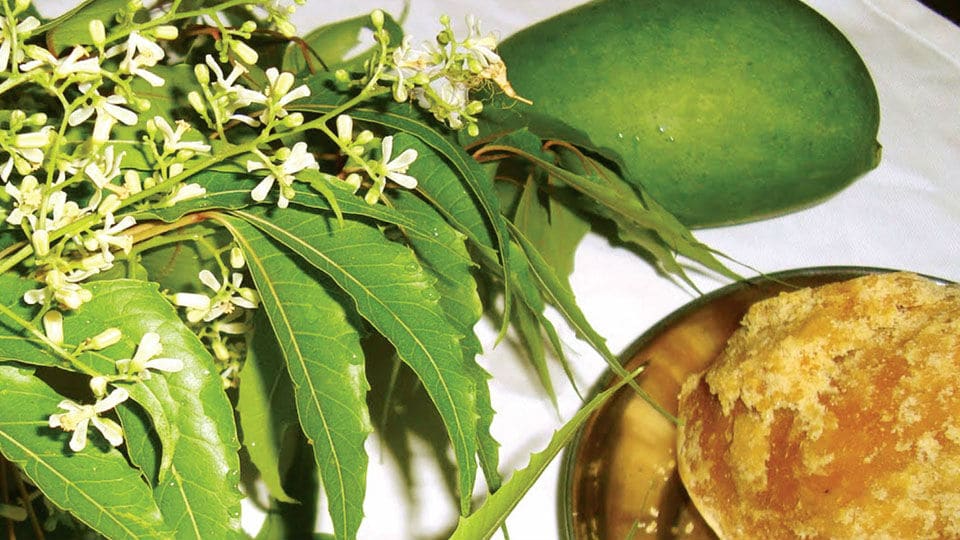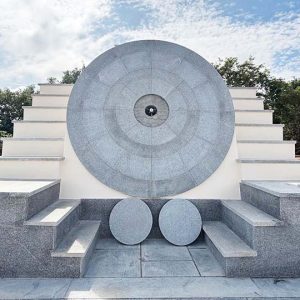By Prof. A.V. Narasimha Murthy, former Head, Department of Ancient History & Archaeology, University of Mysore.
Yugadi also called as Ugadi is fast approaching and people are already making preparations to welcome it. The word yugadi is a Sanskrit composite word, yuga and adi; and it means the commencement of a yuga. In this context, the word yuga does not refer to Kaliyuga or Dwaparayuga but it is just a measurement of time.
Actually in Hindu calendar there are sixty-years and the same is repeated accordingly. If a person is born in Prabhava samvatsara he will have a chance to see it again after sixty years and that is a great and unique event and hence this is celebrated as shashtipoorthi shanti with pomp and religious fervour by inviting relatives and friends and performing sacrifices (homa). Symbolically it is a re-birth and if his wife is alive, the husband will tie a mangalasutra in addition to what she has had at the time of marriage. This is considered unique in the society.
Among the Hindus, there are three systems of reckoning and they are Chandramana (Moon), Sauramana (Sun) and Barhaspatyamana (Brihaspati). Actually people in Karnataka and Andhra observe Chandramana (Moon) or Sauramana (Sun). Most parts of Tamil Nadu observe Sauramana. These are all traditional variations.
Yugadi by whatever name it was called is an ancient practice going back to at least 2000 BC. It is learnt that yugadi was observed in Babylon on the Mesha Sankranti Amavasye not on the padya as we do now. Assyria also followed more or less the same system. The Egyptians, Phoenicians and even the Persians observed the new year (yugadi) on Tula Sankramana. The Greeks also followed a similar system (around fifth century BC) on the Markara Sankranti day.
The Roman Republic originally followed the beginning of the cyclic year on March first in 153 BC. Thus yugadi was observed after 153 BC on January first. This is according to their practice. This has been confirmed by the Julian calendar.
However, the Jews followed a different system. To them the year commenced a day between September sixth and October fifth. In the medieval times when Christianity was strong throughout Europe, the year commenced on March 25. In the course of time, December 25 became the day of commencement of each year. Further changes were made in this reckoning and first January of each year became the first day of each year. In fact in India for reasons of History January first was considered the first day and when the Britishers were ruling us, declared that as a day of celebrations and declared it as a holiday. After independence and with lot of careful thought this system has been discarded. But practices die hard and most of our calendars start the year from January first and end with December 31. The national almanac follows a native system of Hindu calendar and in all official documents both the systems are mentioned for the sake of convenience.
But some other European countries followed their own system. January first as the beginning of the year was opposed by Russia, Scotland, Germany, Denmark and Sweden at different times. Even England opposed it in 1752 AD. But nothing serious happened and January continued to be the commencement of each year.
Now let us come back to yugadi of which we are concerned here. To us the Hindus, yugadi is not just a day on almanac (Panchanga) but it is sacred to be followed with religious practices. Usually people buy Panchanga of their choice (Vontikoppal Panchanga, Sringeri Panchanga, etc.) and on the yugadi day (Hevilambi Samvatsara corresponding to 29.3.2017) perform the worship to Panchanga and eat Bevu- Bella and read the summary of the effects of various aspects for the current year. This is done in temples either in the morning or in the evening. People usually buy new dresses for the family and prepare sweets. Whatever sweets may be prepared, kayi obbattu is a must on this day. As most housewives find it difficult to prepare them at homes, sweetmeat shops prepare them in bulk and sell them to their customers. At times it becomes scarce and hence people pay advance and reserve their quota of kayi obbattu.
Governments have declared yugadi as a day of holiday and this adds further joy to the children who need not go to the school and others need not go to their offices. Thus everybody is confined on that day to their homes. Though not desirable, some people play cards with stakes and the Police will have a hard time to control it. After all, Police personnel also have to celebrate yugadi.
Out of curiosity I looked into the pages of a Panchanga. It stated that there will be good rains; good yield of paddy and pulses; black grains develop well; people suffer from different ailments; yajnas and yagas (vedic sacrifices) will increase; the prices of sugar, ghee, oils, copper, precious stones (pearls, ratna, manikya) become abundant; cattle will have good fodder and will give more milk.
Hindu festivals have a message to give to the people. We consume Bevu (neem leaves) and Bella (jaggery) on this day with a sloka. We eat it to good health (vajradina) auspiciousness, destruction of wicked things. It reads Shatayur Vajradehaya Sarvasampatkarayacha, Sarvarishta Vinashaya nimbakam dala bhakshanam. It also has a philosophical message. Life is not always bitter, it is also not sweet like bella. It is a combination of both. By eating bitter neem and sweet jaggery, we should take both as they come; We should not over-rejoice when happy and not completely be depressed by the problems. We should take them in a harmonious way as life takes you. That is the message of yugadi.








Recent Comments